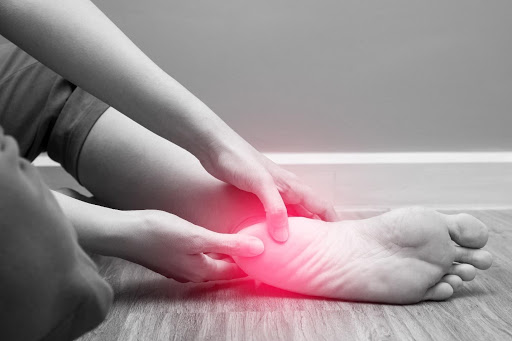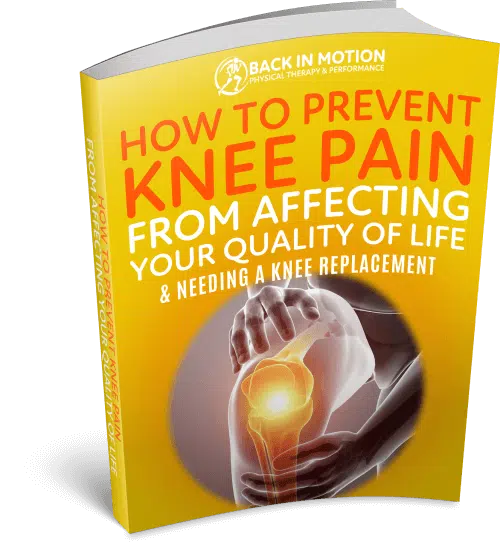Why Does My Heel Hurt So Bad in the Morning? The Truth About Plantar Fasciitis
If you’ve ever woken up and felt a stabbing pain in your heel the moment you took your first steps, you’re not alone.
This common complaint is often a telltale sign of plantar fasciitis—one of the leading causes of foot pain, affecting up to 10% of the population at some point in their lives. For many, this condition turns daily activities like walking, standing, or even climbing stairs into a painful ordeal. But why does it happen? And more importantly, how can you fix it without resorting to medication, injections, or surgery?
In this detailed guide, we’ll break down the real reasons behind plantar fasciitis, explain why mornings often feel the worst, explore the most common causes, and provide a step-by-step plan to relieve the pain and prevent it from coming back. Let’s dive into the science of plantar fasciitis and the practical solutions that can help you get back to pain-free movement.
What Is Plantar Fasciitis?
Plantar fasciitis occurs when the plantar fascia—a thick, fibrous band of tissue that runs along the bottom of your foot from the heel to the toes—becomes inflamed or irritated. This tissue plays a crucial role in supporting the arch of your foot, acting like a natural shock absorber with every step you take.
It helps distribute your body weight evenly across your foot, providing stability and flexibility during movement. However, when the plantar fascia is subjected to excessive strain, microtears can develop in the tissue, leading to inflammation, pain, and stiffness, most commonly felt in the heel.
The plantar fascia isn’t just a passive structure—it’s a dynamic part of your foot’s biomechanics. It stretches and contracts with every step, absorbing the impact of walking, running, or jumping. When healthy, it’s resilient and strong, but repeated stress or improper mechanics can push it beyond its limits.
Over time, these microtears can lead to degeneration of the tissue, a condition sometimes referred to as plantar fasciosis, which is more chronic and harder to treat than acute inflammation. The pain typically manifests as a sharp, stabbing sensation in the heel, though some people also feel a burning or aching sensation that radiates along the arch of the foot.
Plantar fasciitis is particularly common among adults aged 40 to 60, but it can affect anyone, from athletes to people with sedentary lifestyles. Risk factors like obesity, flat feet, high arches, or occupations that require prolonged standing (such as teachers, nurses, or factory workers) can increase the likelihood of developing this condition. Understanding what plantar fasciitis is—and how it develops—is the first step toward addressing the pain effectively.
Why Is Plantar Fasciitis Worse in the Morning?
If you have plantar fasciitis, mornings can be absolutely brutal. The sharp, stabbing pain you feel when you first step out of bed is often the worst part of the day, leaving you hobbling to the bathroom or kitchen.
But why does this happen?
The answer lies in what happens to your foot while you sleep.
During the night, your foot is at rest, typically in a relaxed position with your toes pointing downward (a position known as plantarflexion). In this state, the plantar fascia contracts and tightens as it’s not being stretched or used. When you wake up and take your first steps, the sudden weight of your body stretches the tightened fascia, irritating the already inflamed tissue and triggering that characteristic sharp pain in your heel. It’s like pulling on a tight rubber band that’s been sitting still for hours—the sudden stretch causes discomfort.
As you move around, the plantar fascia gradually warms up and loosens, which is why the pain often improves after a few minutes of walking. However, this relief is usually temporary. If you sit down for a long period—say, during a meeting or while working at a desk—the fascia can tighten up again, and the pain returns when you stand up. Similarly, standing for too long, especially on hard surfaces like concrete, can cause the pain to flare up later in the day. This cycle of tightness, irritation, and temporary relief is a hallmark of plantar fasciitis, and it’s what makes the condition so frustrating for those who suffer from it.
- While you sleep, your foot is at rest, and the plantar fascia contracts and tightens.
- When you take your first steps, the suddenly stretched fascia becomes irritated, triggering sharp pain.
- After some movement, the tissue loosens up, and the pain may temporarily improve—but it often returns after long periods of sitting or standing.
Common Causes of Plantar Fasciitis
Plantar fasciitis doesn’t strike out of the blue—it’s often the result of repetitive stress, improper foot mechanics, or lifestyle factors that put excessive strain on the plantar fascia. Understanding the root causes can help you address the condition more effectively and prevent it from recurring. Here are some of the most common culprits:
- Tight Calves and Achilles Tendons: Limited ankle mobility is a major contributor to plantar fasciitis. When your calves and Achilles tendons are tight, they restrict the natural motion of your ankle, forcing the plantar fascia to compensate by taking on extra strain with every step. This is especially common in people who wear high heels regularly or those who don’t stretch after physical activity.
Weak Foot or Arch Muscles: The small muscles in your feet play a critical role in supporting your arch and distributing weight evenly. If these muscles are weak—due to lack of exercise, wearing unsupportive shoes, or spending too much time barefoot on hard surfaces—the plantar fascia has to work harder to stabilize your foot, leading to overuse and irritation. - Overuse or High-Impact Activities: Runners, walkers, and people who spend long hours on their feet (like retail workers or teachers) are at higher risk for plantar fasciitis. High-impact activities like running on pavement or jumping can overload the plantar fascia, especially if you don’t give your feet enough time to recover between sessions. Even non-athletes can develop the condition if they stand for prolonged periods on hard surfaces without proper footwear.
- Worn-Out or Unsupportive Shoes: Footwear plays a huge role in foot health. Worn-out sneakers lose their cushioning and support over time, leaving your feet vulnerable to strain. Similarly, flat shoes like flip-flops or ballet flats offer little to no arch support, forcing the plantar fascia to bear the brunt of every step. Shoes that are too tight or too loose can also alter your gait, putting additional stress on the fascia.
- Sudden Increase in Activity: A rapid increase in physical activity—such as doubling your running mileage, starting a new fitness program, or spending more time on your feet—can overwhelm the plantar fascia. This is especially common among weekend warriors or people training for events like marathons without properly building up their activity levels.
- Body Weight and Posture: Excess body weight can increase the load on the plantar fascia, making it more prone to injury. Additionally, poor posture or gait abnormalities—like overpronation (when your foot rolls inward excessively) or supination (when your foot rolls outward)—can create uneven stress on the fascia, leading to inflammation over time.
- Age and Foot Structure: As we age, the plantar fascia loses some of its elasticity, making it more susceptible to injury. People with flat feet or high arches are also at greater risk, as these foot structures can alter how weight is distributed across the foot, placing extra strain on the fascia.
How Do You Fix It?
The good news is that plantar fasciitis is treatable, and most people can recover without resorting to invasive treatments like surgery or corticosteroid injections. The key is to address both the symptoms and the underlying causes through a combination of at-home remedies, lifestyle changes, and targeted exercises.
Here’s a detailed plan to reduce pain, promote healing, and prevent recurrence:
- Stretch Your Calves & Feet: Tightness in the calves, Achilles tendon, and plantar fascia itself is a major contributor to the condition. Incorporate daily stretching into your routine to relieve tension and improve flexibility. A simple calf stretch—standing with one foot forward and the other back, leaning against a wall while keeping your back heel on the ground—can help. For the plantar fascia, try a seated stretch: cross one leg over the other, pull your toes back toward your shin, and hold for 20-30 seconds. Repeat 2-3 times per foot.
- Strengthen Your Foot Muscles: Building strength in the small muscles of your feet can take pressure off the plantar fascia. Try exercises like toe curls: place a small towel on the floor, and use your toes to scrunch it toward you for 10-15 reps. Arch lifts are another great option—while seated, press your toes into the ground and lift your arch without curling your toes, holding for a few seconds before releasing. Aim for 2-3 sets of 10 reps daily. Over time, these exercises improve foot stability and reduce strain on the fascia.
- Use a Frozen Water Bottle for Relief: To reduce inflammation and stretch the fascia at the same time, roll your foot over a frozen water bottle for 10-15 minutes, 1-2 times a day. The cold helps numb the pain and reduce swelling, while the rolling motion gently stretches the plantar fascia. Be sure to place a thin cloth between your foot and the bottle to avoid ice burn, and stop if you feel discomfort.
- Check Your Shoes: Footwear can make or break your recovery. Swap out worn-out sneakers—most running shoes lose their support after 300-500 miles of use—and invest in supportive shoes with good arch support and cushioning. Look for shoes with a slight heel (about 1-2 inches) to reduce tension on the Achilles tendon and plantar fascia. Orthotic inserts or custom-made shoe inserts can also help if you have flat feet or high arches. Avoid going barefoot on hard surfaces, especially during recovery, as this can exacerbate the pain.
- Improve Your Movement Patterns: Plantar fasciitis is often a symptom of broader biomechanical issues. Tightness or weakness in other parts of your body—like your hips, glutes, or core—can alter your gait and put extra stress on your feet. Work on improving your overall movement patterns by incorporating exercises like glute bridges or hip stretches into your routine. If you’re a runner, consider getting a gait analysis to identify and correct issues like overpronation or improper stride length.
- Massage and Myofascial Release: Massaging the plantar fascia and surrounding muscles can help break up scar tissue and improve blood flow to the area, promoting healing. Use your thumbs to apply gentle pressure along the arch of your foot, working from the heel to the toes. You can also use a golf ball or massage ball for a deeper release—roll it under your foot for 2-3 minutes, focusing on tender spots. Be gentle, as overly aggressive massage can worsen irritation.
- Night Splints for Persistent Pain: If morning pain is a major issue, consider using a night splint. These devices keep your foot at a 90-degree angle to your leg while you sleep, preventing the plantar fascia from contracting overnight. Studies show that night splints can reduce morning pain and speed up recovery for some people, though they may take a few nights to get used to.
- Gradual Return to Activity: Once the pain starts to subside, ease back into your normal activities gradually. For runners, start with short, low-impact runs on soft surfaces like grass or a treadmill, and increase your mileage by no more than 10% per week. If you stand for long hours at work, take frequent breaks to sit and stretch, and consider using a cushioned mat to reduce the impact on your feet.
- Consult a Gray Method™ Practitioner for a Full-Body Assessment: Plantar fasciitis is often a symptom of broader biomechanical imbalances that extend beyond the foot. A Gray Method™ Practitioner can evaluate your ankle joint, knee, and hip to identify how these areas contribute to your condition. For example, limited ankle mobility—often caused by tight calves or a stiff ankle joint—can force the plantar fascia to overcompensate, leading to strain. Similarly, knee misalignment or weakness in the hip muscles (like the glutes) can alter your gait, causing uneven pressure on your feet. Overpronation at the ankle, a misaligned knee, or poor hip stability can all create a chain reaction that stresses the plantar fascia. A Gray Method™ Practitioner uses a holistic algorithm to detect these issues, addressing them through targeted manual therapy, corrective exercises, and movement retraining. By fixing these upstream contributors, the Gray Method™ approach not only relieves your foot pain but also prevents future injuries by improving your overall biomechanics.
When to Seek Help
While many cases of plantar fasciitis resolve with consistent self-care, some people need professional help to fully recover. If your heel pain isn’t improving after 4-6 weeks of at-home treatment, or if it keeps coming back despite your efforts, it’s time to address the root cause.
Plantar fasciitis can turn into a chronic condition if left untreated, leading to compensatory issues like knee, hip, or back pain as your body adjusts to avoid the discomfort. Chronic cases may also lead to the development of heel spurs—bony growths on the heel bone—though these are rarely the primary cause of pain.
At our clinic, we specialize in fixing foot pain at its source, using a comprehensive approach that combines manual therapy, corrective exercises, and personalized movement strategies. We help you regain mobility, strength, and confidence in your movement without relying on medications, injections, or surgery. Our goal is to not only relieve your pain but also address the underlying biomechanical issues—like tight calves, weak foot muscles, or poor gait patterns—that contributed to your plantar fasciitis in the first place. Struggling with heel pain that’s holding you back from the activities you love? Book a free consultation for plantar fasciitis treatment Fort Myers today, and let’s get you walking, running, and living pain-free again!
Our goal is to not only relieve your pain but also address the underlying biomechanical issues—like tight calves, weak foot muscles, or poor gait patterns—that contributed to your plantar fasciitis in the first place.
Struggling with heel pain that’s holding you back from the activities you love? Book a free consultation today, and let’s get you walking, running, and living pain-free again!









